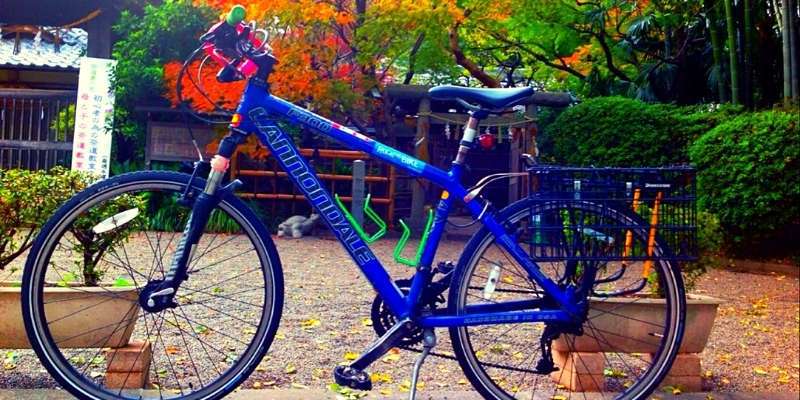
Mountain bikes (MTBs) and road bikes are intended to handle a variety of terrains. The differences in speed and endurance characteristics of a road bike versus a mountain bike are significant. Compared to MTB, a road bike is faster and has more aerodynamic elements; thus, it requires more control, balance, and comfort.
Mountain bikes include outstanding features for off-road cycling because they are specifically intended to handle challenging terrains, but they are slow. As they contain specifically engineered components to manage their specific road terrains, a road bike can cover large distances quickly.
Hence, the primary motive for switching from a mountain bike (MTB) to a road bike is to boost speed, as road bikes are meant to ride quickly on roads.
Mountain bikes and road bikes differ in that mountain bikes are designed for off-road use, whereas road bikes are designed for on-road use. Road bikes have narrower tires than mountain bikes, are lighter, and have fewer gears.
So there are a few options for converting your mountain bike to a road bike. You can replace the tires and use a different handlebar.
Be sure to read up on the process and understand what is involved.
7 Common Changes Can Help You To Convert Your Mountain Bike To Road
Minimize the features that make your mountain bike suited for ridings off-road, such as tires, suspension, position, and gearing, to improve riding on the road.

1. Suspension
Mountain bikes are formed to take the pounding of rocks, roots, and terrain. Most modern ones have fantastic off-road suspension but are unneeded on the road. You can utilize it on your road rides as a quick modification if you have a lockout.
However, if your suspension does not have a lockout, you can stiffen it up by increasing the air pressure in it. It reduces any bobbing while climbing or sprinting during standing and pedaling.
Also, a sturdy fork makes your bike lighter and stiffer for more permanent or seasonal adjustments for better road riding.
2. Tires And Wheels
Pump up your mountain bike tires to 40–50 PSI. (Before inflating, check the sidewall to see the maximum PSI.) Hence, the tire will roll faster and feel better when standing up. Several experienced mountain cyclists bring slick tires to take road training for a faster tire setup on extended excursions. One can either put these tires on spare wheels set or installed on their usual off-road wheels. You can also do it if the trainer prioritizes this type of training.
Opt for slick tires that are 1.5″ wide and fit your wheels. With the popularity of 29″ wheels and gravel riding, slick tires are readily available. If you can afford and plan to perform a lot of road training on your mountain bike, consider acquiring a second pair of wheels. It will save time switching between road and mountain configurations.
Remember to update your emergency pack with adequate equipment and tubes for the new tire size, as well as the ability to remove tires that are tighter and harder.
3. Gearing
You can employ a different cassette to boost the gearing significantly on your mountain bike if you get a different set of wheels. The cassette has more gears in a smaller range on road bikes, enabling you to change your cadence in smaller increments. As mountain bikes are devised to handle steep climbs and slower average speeds, you’ll need to spin swiftly whenever the speed picks up on the road. Since so many mountain bikes now have a single gear, changing to a larger chainring (or even a new crankset) to handle the more incredible speeds achieved on road rides is considerably more accessible than it used to be.
Contact your local mechanic about your mountain bike’s gearing possibilities for road training; if you can’t make changes, don’t worry; the high cadence work will be a great training stimulus.
4. Handle Bars
The handlebars can be lowered to improve the bike’s aerodynamics. You’ll need handlebars that are shoulder width. This is because sitting upright will ultimately slow you down. Additionally, you’ll require narrower handlebars.
5. Weight
The wheel swap will contribute significantly to the bike’s weight reduction. Other components that should be changed to lighten the MTB include the saddle, which should be replaced with a lighter version. Additionally, you can replace or eliminate the suspension forks.
You require a saddle that enables you to ride more uprightly. The MTB saddle can be shifted slightly forward. Additionally, purchase additional rigid forks because they are stiffer, lighter, and more suited to road biking.
To further lighten the bike, you can replace some of the bike’s components with carbon fiber seats, stems, and forks.
6. Minor Position Changes
If you plan on doing a bunch of road riding with minor changes between road and mountain configurations, consider lowering your handlebars. Road cyclists opt for lower handlebars for better aerodynamics, whereas mountain bikers for better handling prefer higher bars. It only takes five minutes to lower your stem on the steer tube. However, be mindful that your body may adapt to this position, as it alters the amount of pressure on your hands and may result in increased saddle pressure when you bend forward.
A more extensive position modification is to attach a drop handlebar to your mountain bike frame, similar to those seen on road bikes, to change the purpose of your bike permanently or for different seasons.
You can also opt for your mountain bike for road riding. It will never replace the real thing, but you may get a lot of the same benefits and fun by making a few, or all, of these changes!
7. Budget
Your budget determines the cost of converting an MTB to a road bike. It could be a significant endeavor because you’ll end up with a one-of-a-kind bike that you created yourself. You can choose to make any modifications or just the absolute minimum.
Main Features Of A Mountain Bike
An MTB is more substantial. It also incorporates rear and front suspension to alleviate the impacts of roots, pebbles, and rough terrain. On a standard road, the suspension is excessive.
MTBs are also more comfortable and stable than road bicycles.
Also, they have flat handlebars, which force the rider to sit upright.
A mountain bike’s tires, on the other hand, are steady, heavy, and designed for off-road use. They contain lugs and lower air pressure for grip and traction, resulting in higher rolling resistance. Also, they are broader to provide additional traction and control to the rider. However, the MTB’s above qualities have a detrimental effect on its speed.
Main Features Of A Road Bike
The weight of a road bike, on the other hand, is significantly less. The small weight makes it easier to control road bikes at high speeds. A road bike’s tires are also smaller and have less power to grip the ground. Aside from that, posture practices on a road bike and an MTB differ.
The rider sits in a forward-leaning position on a road bike, but he sits in a backward-leaning position on an MTB, which improves their aerodynamics.
Also, both of them use distinct pedaling strategies.
How Much Difference Do Road Bike Tires Make On A Mountain Bike?
Mountain bike tires are a little more narrow than road bike tires, so they offer less traction, and have less suspension, so they have a more challenging ride. These characteristics help the mountain biker move over rocks and other obstacles.
Can A Mountain Bike Be Used As A Road Bike?
The term “road biking” refers to any bicycle riding, whether commuting to work or going on a weekend excursion. Mountain biking is a much more specialized activity; it typically involves technical challenges in rugged terrain.
Road bikes are suitable all-around bicycles that you can use on paved paths and for commuting, exercise, and other recreational purposes. Mountain bikes are geared for technical, mountainous terrain. Mountain bikes can be ridden on most road surfaces.
How Much Faster Is A Road Bike Than A Mountain Bike?
Riding posture affects how quickly a cyclist can move so that a road bike can be faster than a mountain bike by as much as 20%. Rolling resistance is caused by friction between wheels and the ground, affecting speed.
Mountain bikes have large wheels, which helps them ride over rough terrain more quickly, so they may have less rolling resistance than road bikes. Mountain bikes tend to be heavier than road bikes. Road bikes have a longer wheelbase than mountain bikes and thus can turn faster than their counterparts.
Should You Ride A Mountain Bike On The Road?
Mountain bikes are rigid, but they’re not slow. They’re easier to pedal than road bikes, and they move quickly over any surface. They’re as fast as road bikes and even more comfortable and versatile. It will help if you ride mountain bikes on the street.
Is A Mountain Bike Good For Street Riding?
A mountain bike is not necessarily designed for street riding, as it typically has a higher ground clearance and more rugged tires than a traditional road bike. That said, many mountain bikes do feature quick-release wheels, and other features that make them well-suited for street riding, and many riders find them comfortable and fun to ride on city streets.
Mountain bikes are heavier and have thicker tires that can be more difficult to pedal on paved surfaces. That said, some mountain bikes do come with a street-specific tread that can make them better suited for this type of riding. If you’re looking for a bike that’s more suited to commuting or urban riding, a hybrid or road bike may be a better option.
Therefore, With a few simple modifications, you can transform your mountain bike into a road bike and enjoy the benefits of riding on paved roads. Make sure to experiment with various parameters to find the most comfortable one for you.






